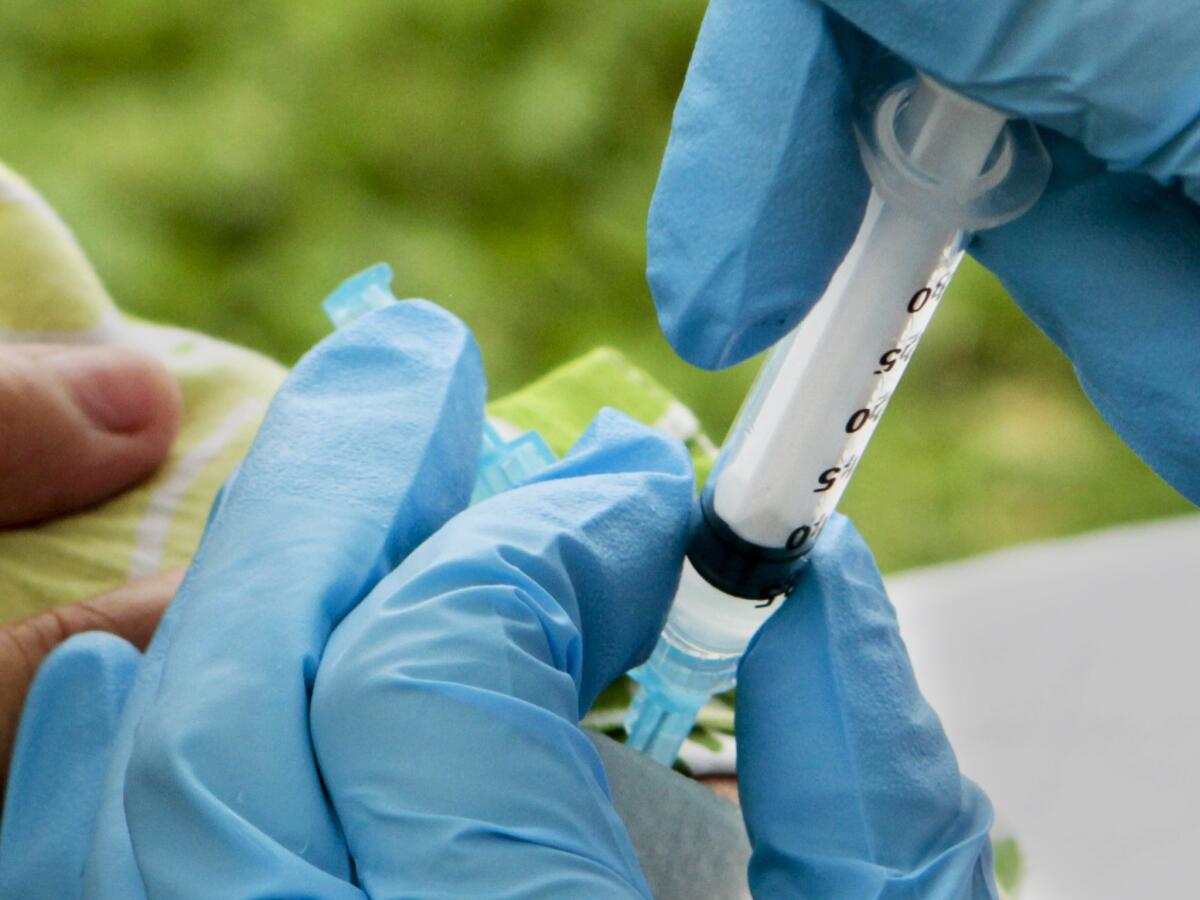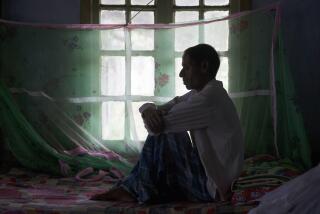Whooping cough reaches epidemic level in California

For the first time in four years, California is experiencing a statewide epidemic of pertussis, or whooping cough, with infants under the age of 6 months facing the greatest risk of hospitalization or death, according to state health authorities.
“We urge all pregnant women to get vaccinated,” said Dr. Ron Chapman, director of the California Department of Public Health. “We also urge parents to vaccinate infants as soon as possible.”
California counties have reported 3,458 cases of the disease this year, including two infant deaths. While that figure is less than the 9,163 cases reported in 2010 — the last epidemic year — health officials say this year’s caseload is on track to meet that level.
“The summer months are usually the worst,” said Dr. Gil Chavez, an epidemiologist and deputy director at the department.
A disease is considered an epidemic if it exceeds anticipated levels; it is not the same as declaring a public health emergency, Chavez said.
On average, state epidemiologists expect to see 80 to 100 cases of whooping cough each month. In the last two weeks, California counties reported more than 800.
The earliest age an infant can be vaccinated is six weeks. Because of this, health officials say every pregnant woman should get a Tdap vaccination in the third trimester of pregnancy, as the mother’s immunity will transfer to her baby — at least temporarily.
Unlike the measles vaccine, pertussis vaccines do not provide lifelong immunity. It’s partially for this reason that whooping cough is cyclical: It reaches epidemic levels every three to five years.
The disease is caused by the bacterium Bordetella pertussis, which clings to the tiny hairs, or cilia, that line human air passages. The hairs usually work to keep the passageways clean by sweeping them, but B. pertussis produces toxins that paralyze the hairs and inflame surrounding tissues.
As a result, patients can’t clear mucous from their lungs, and their airways constrict. This causes a “whooping” noise as they attempt to breathe after a coughing fit.
Symptoms can vary by age, but children commonly suffer a cough and runny nose for one to two weeks, then the cough becomes more severe. Some infected infants may not suffer an apparent cough; instead, their face might appear to turn red or purple at times.
“Our No. 1 goal here is to try and prevent those cases of severe disease,” Chavez said.
Twitter: @montemorin
More to Read
Start your day right
Sign up for Essential California for news, features and recommendations from the L.A. Times and beyond in your inbox six days a week.
You may occasionally receive promotional content from the Los Angeles Times.







